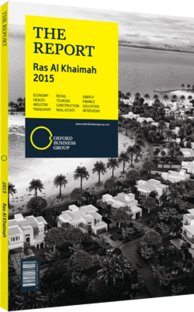Ras Al Khaimah looks for debt markets return, issues first sovereign sukuk in a decade
Although the government of Ras Al Khaimah is not known for frequent bond issuance, it returned to the debt markets in 2015 with the deployment of a $500m sovereign sukuk (Islamic bond). Bonds, both Islamic and conventional, have been increasingly utilised by public and semi-privatised entities in the emirate recently, and despite earlier indications that the government would seek a syndicated loan to raise capital for new projects, debt market conditions are more favourable at present, as evidenced by RAK Bank’s recent decisions to both issue and tap a new bond, its first since 2005. With RAK’s spending set to rise as it moves to improve public services and roll out new projects, a sovereign sukuk will underpin expansion in the emirate, and highlight the rising attractiveness of Islamic financial products both in RAK and the wider UAE.
Sukuk Development
With the emirate enjoying strong budget surpluses since 2009, bond issuance from RAK’s government has been rare; however, increasingly favourable market conditions, falling national growth projections for the UAE and ongoing market volatility have made bonds an increasingly attractive option for the emirate’s government. At the same time, the UAE’s push to develop Islamic finance has had an impact on the structure of new debt instruments in the country, and RAK has been active in issuing sukuk to finance government spending, moving in October 2013 to issue a $500m, 3.297%, five-year instrument priced at a spread of 175 basis points (bps) over mid-swaps.
In June 2014, the emirate sent requests for proposals for an Islamic bond deal, around the same time that Sharjah and Bahrain also started talks with bankers on similar deals. Unlike the other two, however, RAK did not immediately appoint banks to arrange the deal, and in August 2014 local media reported that RAK had issued a request for proposals for a syndicated loan, indicating that it was looking at alternative options.
The government favoured the sukuk option, announcing in March 2015 that it had set the price for its $1bn, dollar-denominated sukuk, issued under an ijara structure, at 125 bps over mid-swaps. The government also selected Al Hilal Bank, Citigroup, JP Morgan and the National Bank of Abu Dhabi to arrange roadshows in London, and the deal was printed in late March, according to media reports, garnering $2.5bn of orders.
Turning To Markets
With the IMF expecting the wider GCC to lose $300bn in 2015 should oil prices remain depressed, and equities markets increasingly bearish, a turn towards bond issuance is expected to bolster government revenues in RAK if federal spending and investment income fall. In May 2015 the IMF lowered its GDP growth forecast for the UAE to 3.2% in 2015 and 2016, as a result of lower crude prices, which fell 55% between June 2014 and August 2015. Analysts have also lowered their outlook for the UAE’s financial services sector as a result of an anticipated slowdown in real estate and equities markets, with the UAE Insurance Authority issuing investment regulations for insurance firms in February 2015 in a bid to reduce losses (see Financial Services chapter).
Under the UAE’s constitution, education, health, security, welfare and the majority of social spending are administered at the federal level, while emirates are in charge of infrastructure, natural resources and economic strategy. RAK has benefitted from this: the Dh1bn ($272.2m) Sheikh Khalifa Specialty Hospital, for example, was financed by a grant from the Ministry of Presidential Affairs. With growth forecasts diminished and the emirate facing rising electricity and water demand, a sovereign bond should enable new investment to meet RAK’s infrastructure needs. Conditions are favourable, as evidenced by RAK Bank’s move to issue a benchmark bond in 2014. The bank re-entered the market for the first time since 2005 with a $500m, 3.25% issuance on the Abu Dhabi Securities Exchange in June 2014, and re-opened the bond in February 2015, increasing it to $800m. The bank said debt markets were more favourable than syndicated loans.
You have reached the limit of premium articles you can view for free.
Choose from the options below to purchase print or digital editions of our Reports. You can also purchase a website subscription giving you unlimited access to all of our Reports online for 12 months.
If you have already purchased this Report or have a website subscription, please login to continue.

